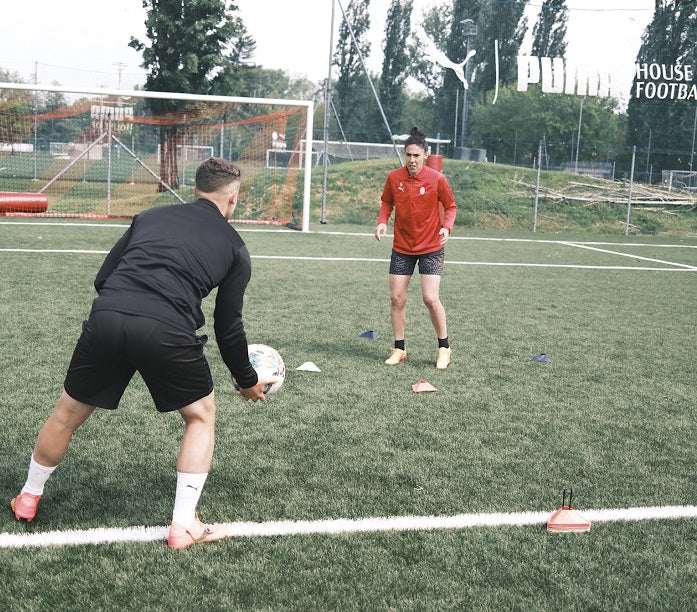Football thrives on dynamism, rhythm, and emotion – just like music. That's why more and more coaches are relying on training sessions accompanied by music.
Music can:
-
Increase motivation: Players automatically give it more gas.
-
Promote a sense of rhythm: More important for dribbling, passing and coordination.
-
Boost team spirit: Shared beats connect and are fun.
-
Regulate intensity: Fast songs for power exercises, calm music for cool-down.
At 360Football, we already use such approaches in individual and small group training sessions to support players even more effectively and with more enjoyment 👉 More information about our personal training .
Benefits of football training with music
1. More motivation & fun
Especially during long training sessions or after a strenuous day at school, music acts as an energy booster. Players are more alert, engaged, and motivated.
2. Improved coordination
Exercises in rhythm not only promote ball feel, but also balance and fluidity of movement. This is a valuable addition, especially in youth training.
3. Higher training intensity
Music with fast beats automatically encourages more movement – perfect for sprints, technical exercises and games.
4. Stress reduction & focus
Music reduces pressure and nervousness. Especially for young players, this can help them perform more relaxed and creatively.
How to incorporate music into your workout
Warm-up
-
Movement in rhythm: light running exercises and stretching in time.
-
Ball familiarization: juggling exercises or passing combinations with music in the background.
Technical exercises
-
Dribble to the beat: Players dribble to the music, changing direction when the beat changes.
-
Passing & Receiving: Short, rhythmic passes train ball control and speed.
Game forms
-
Small-sided games: Music provides more energy and fun.
-
Challenges: For example, 1-on-1 or 3-on-3 with music to keep the intensity high.
Cool down
-
Stretching & relaxation: Calm songs help you unwind.
-
Reflection: Players can reflect on the training in a relaxed manner.
Training ideas: Football training with music
-
“Beat the Beat”: dribbling course, change of direction when the music changes.
-
“Pass in time”: Passing according to a rhythm, increasing speed.
-
“Musical Sprint”: Sprint intervals – run at full speed to fast music, run at a relaxed pace to calm music.
-
“Rhythmic Rondo”: Rondo with the requirement to move the ball in time.
Frequently asked questions from trainers
Which music is best?
Pop, hip-hop, or electronic music with clear beats are good options. Important: Keep the volume moderate to ensure coaching remains possible.
For which age groups is music training suitable?
From children to adults. It's especially effective with teenagers, as music massively boosts their motivation.
Can music also be disruptive?
If it's too loud or inappropriate, yes. It's important to use music purposefully and variably.
Practical example from the training
In a small group of seven players, we accompanied a 60-minute session with music:
-
Warm-up with fast beats
-
Technical drills in rhythm
-
3-on-3 game format with changing music speed
-
Cool down with relaxing music
The result: more enjoyment of playing, higher intensity and a visible boost in motivation.
Conclusion: Music makes training more lively
Soccer training with music is more than just a trend—it's an effective way to promote motivation, a sense of rhythm, and team spirit. Whether in individual training , in small groups, or with the entire team—music brings energy to the pitch.
👉 Start your personal training with 360Football now and experience how music and football take your game to a new level:
Book personal or small group training here .


